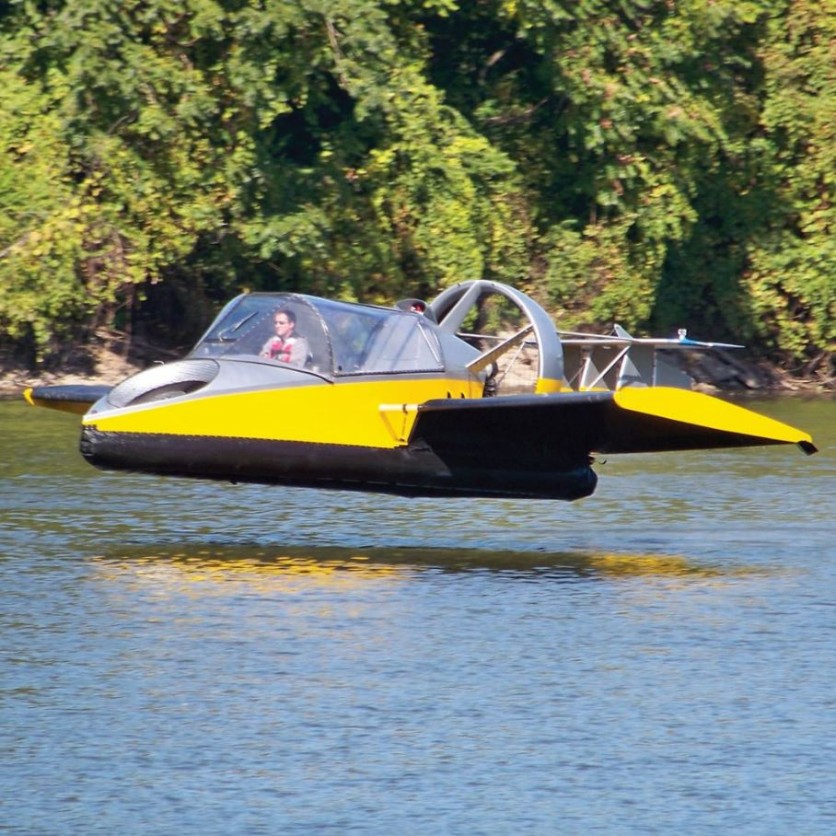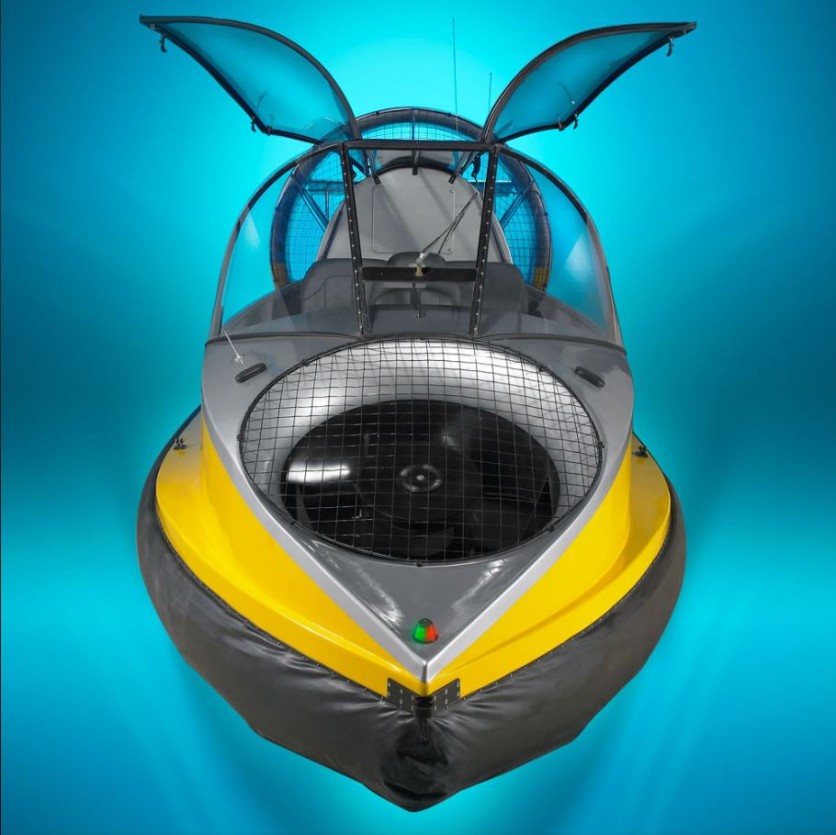Why bother choosing between an aircraft and a vessel when you can have them both in Hammacher Schlemmer's futuristic flying hovercraft that can travel over land and water?

The manufacturer claims that internal combustion is the only choice for the hovercraft because there is no electrification in the 130-hp twin-cylinder liquid-cooled turbo gasoline engine included in the futuristic vehicle.
The engine of the Flying Hovercraft enables it to fly up to 155 miles (250 km) at 70 mph (113 kph) and 20 feet (six meters) above the surface, as reported first by Interesting Engineering.
Read also: 'Flying Hotel That Never Lands': AI Sky Cruise Ship Will Use Nuclear Energy to Fly in Luxury
All About the Flying Hovercraft
A 34-inch lift fan operating at 1,100 rpm balances the 60-inch (152 cm) wood and carbon composite propeller that the Flying Hovercraft spins. The hovercraft's skirt is made of resilient nylon with a vinyl coating that can also inflate.
Due to its low center of gravity and composite fiberglass and PVC hull, the manufacturer says the hovercraft can fly in winds up to 25 mph (40 kph) and waves up to six feet (1.80 meters).
"Operating in freshwater or saltwater, and up to 30 percent inclines over sand, mud, grass, swamp, desert, ice, and snow. Its wings and horizontal elevator enable pilots to simply hop over water- or land-based obstacles up to 20 feet (1.80 meters) high. Insurmountable to a typical hovercraft," Hammacher Schlemmer said.
When in flight, the hovercraft can support a total weight of 600 lbs (270 kg), including the pilot and passengers. Additionally, the elevator and the craft's three vertical rudders are controlled by a joystick.
A twist friction-lock throttle and a variable drive system are responsible for regulating the lift fan and enabling the management of the craft's forward speed and hovering.
However, it is worth noting that a boat license must be obtained if you want to buy this Flying Hovercraft, and of course, you will be needing a hefty $190,000.

This article is owned by Tech Times
Written by Joaquin Victor Tacla
ⓒ 2026 TECHTIMES.com All rights reserved. Do not reproduce without permission.




